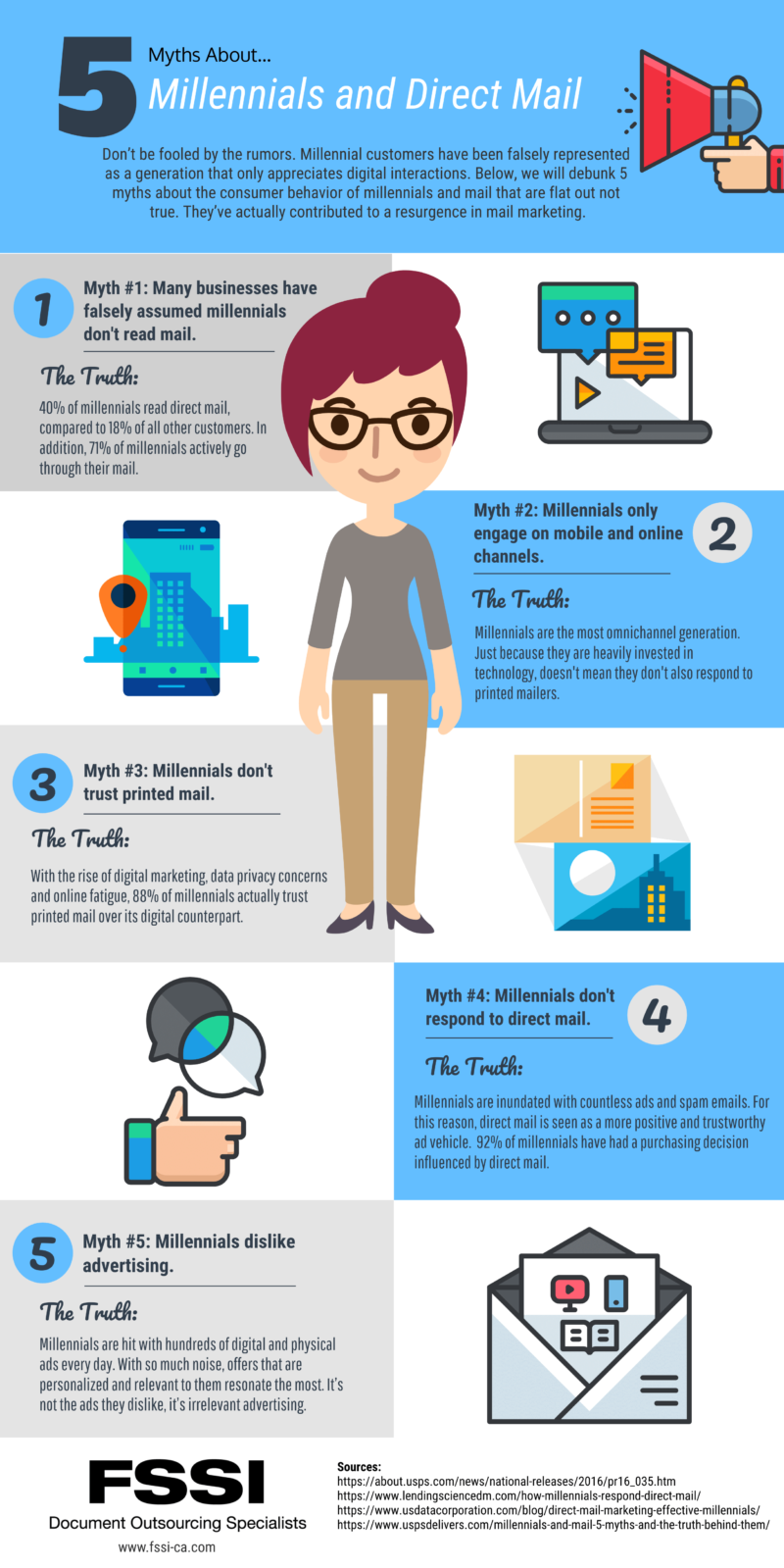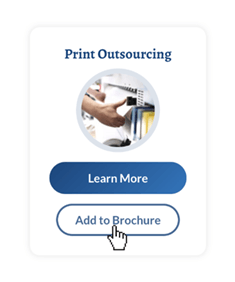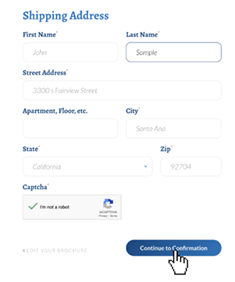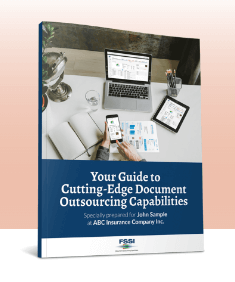Customer Experience and Engagement, Direct Mail, Marketing Strategies, Millennials and Gen Z, Variable Data Personalization
Top 5 Myths About Millennials and Direct Mail

It’s a modern myth that millennials are the “paperless” generation. The idea that the Digital Age has changed the role of printed mail is absolutely correct, but direct mail marketing remains one of the most effective tools to deliver messages, offers, products and more, especially to millennials. And why shouldn’t it?
Yes, millennials enjoy the perks of our digital world, but they are also the kids that grew up with newspapers delivered to their front lawns, magazine clippings and posters wallpapering their bedrooms, and back-breaking textbooks weighing heavy to the floor. Print media will always hold power for this generation.
The Truth About Direct Mail Response Rates
Not convinced? Prepare to be shocked – it turns out millennials engage with their mail more than any other demographic! That’s right, your cool 30-something-year-old cousin who moved back in with mom after college and never left probably reads more mail than your grandma does – surprise!
While many might believe that millennials are glued to their smartphones and only look at emails and texts, numerous studies and statistics are shedding light on just how important mail remains for people of all age groups. So, to better demonstrate just how effective direct mail is for the modern marketer, let’s take a look at the top 5 myths (lies) about millennials and mail.
1. Millennials Don’t Read Mail
The USPS conducted a study in 2016 and found that 40% of millennials read direct mail thoroughly compared to a very modest 18% for non-millennials.¹ Not only are millennials engaging with their mail, but they are also VERY responsive to direct mail offers, announcements and more. The USPS also reported that 71% of millennials actively go through their mail regularly compared to only 66% of non-millennials.²
2. Millennials Only Engage Online
Don’t misunderstand, millennials love their internet, but they believe in having options and that definitely includes print. A U.S. Data Corporation study found that millennials will read their printed mail for an average of 9.7 minutes a day while baby boomers and Generation X only read theirs for an average of 8 minutes a day.³ While there’s certainly no doubt that millennials are looking at their digital messages more than most age groups, it doesn’t mean that they don’t spend a significant amount of time perusing their printed mail as well.
3. Millennials Don’t Trust Printed Mail
Okay, seriously? Who doesn’t trust printed mail? A 2015 study found that 88% of millennials believed printed mail to be more official than its digital counterpart.⁴ Countless inboxes around the digital world are flooded with excessive emails and offers throughout the day (a.k.a spam). It seems millennials appreciate the contents of their actual mailboxes more than their email inboxes.
4. Millennials Don’t Respond to Mail
Remember your 30-something-year-old cousin that doesn’t have to pay rent? Millennials have money to spend and they are growing into one of the biggest consumer groups in history, so it’s an incorrect assumption that the demographic doesn’t respond to direct mail. A study demonstrated that around 57% of millennials have made purchases in response to a piece of direct mail.² With viruses and hackers lurking at every download, a piece of direct mail is seen as a more positive and trustworthy piece of marketing.
5. Millennials Aren’t Loyal to Brands
Brand loyalty is much like a relationship with millennials. Loyalty and trust must be gained, and direct mail has had a big effect on that. Over 75% of millennials belong to two or more loyalty programs, with many statistics showing that direct mail helps to promote the likeability and reliability of many brands in numerous industries.⁵
Boost Your Response Rates with the Right Strategies!
The fact that direct mail can remain such a key component of modern marketing is a testament to its power and ability to adapt to modern markets and consumers. Millennials, almost more than any other demographic, appreciate the importance and investment of the right targeted offer, product or service. Simply put, who doesn’t love a coupon?
The best marketing strategies are those that use every tool at their disposal. Rather than having direct mail and online ads compete with one another, the most effective campaigns are those that combine them into one targeted, omnichannel approach.
If you like to take an appointment reminder card but still opt-in for text alerts for your next doctor’s visit, you’re probably a millennial. Millennials are much more likely to respond to a piece of direct mail when it’s followed up by online ads and other forms of offers or engagement.
Combining the reliability and presentation of direct mail with the ease and visibility of online ads is crucial to getting your offers or ads into the right demographic. Maximize your consumer base by using every possible platform to deliver your message to your desired market.
The best marketing strategies are those that use every tool, both printed and digital, to reach millennials and every other demographic — and the best partners are those that can help you focus your marketing for every one of those markets. To learn how you can get the most out of your digital and printed mail, contact FSSI at (714) 436-3300 or visit fssi-ca.com.


Sources:
²https://www.lendingsciencedm.com/how-millennials-respond-direct-mail/
³https://www.usdatacorporation.com/blog/direct-mail-marketing-effective-millennials/
⁴https://www.uspsdelivers.com/millennials-and-mail-5-myths-and-the-truth-behind-them/
⁵https://blog.accessdevelopment.com/customer-loyalty-statistics-2016-edition



